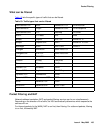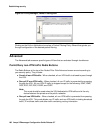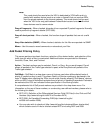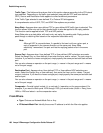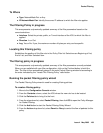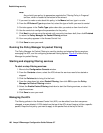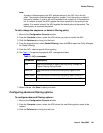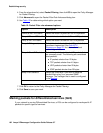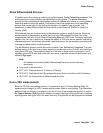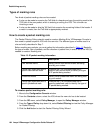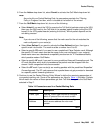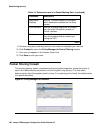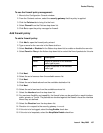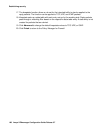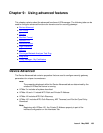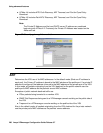
Packet Filtering
Issue 4 May 2005 193
About Differentiated Services
IP packets move from router to router by using Routing and Packet Forwarding processes. The
routing process involves building and maintaining a routing table. The packet forwarding
process involves comparing the destination address of a packet with entries in a routing table to
determine where to send the packet. Furthermore, there is a component of the forwarding
process that can be used for controlling the behavior of a specific type of packet. The
component is called Differentiated Services, which is also known as DiffServ or Quality of
Service (QoS).
Differentiated Services involves using an identification system to mark IP packets. When the
marked packet is processed by a router that is running Differentiated Services, the router
compares the mark with a list of Packet Forwarding Behavior (PFB) rules. If a packet matches a
specific rule, the rule is used to the forward the packet. A PFB rule defines specific forwarding
characteristics such as minimum bandwidth requirements and the transmission precedence of
one type of packet relative to other packets.
The identification system involves two kinds of marks: User Defined and Predefined. The user
defined mark is in the form of a number, where the number can be from 0 to 63, and identifies a
customized PFB rule. The predefined mark is in the form of alpha numeric characters, and it
identifies generic PFB rules that come with your router. A predefined mark is also known as a
Behavior Aggregate.
Note:
Note: For additional information about Differentiated Services, see the following
documents.
● Your router’s documentation.
● RFC 1812, “Requirements for IP Version 4 Routers”
● RFC 2474, “Definition of the Differentiated Services Field in the IPv4 and IPv6 Headers”
● RFC 2475, “An Architecture for Differentiated Services”
How a VSU marks packets
Before a VSU can run marking services, it’s loaded with a list of Packet Marking Rules. As
packets move through the VSU, it examines the header fields of every packet. The information
gathered from the header is compared to the list of rules. If the comparison results in a match,
the Type of Service (ToS) field of the header is marked. Marking can be performed on packets
entering and/or exiting the VSU. Be aware that only IPv4 packets can be analyzed and marked.



